El Badi Palace or Badi' Palace (Arabic: قصر البديع, lit. 'Palace of Wonder/Brilliance', also frequently translated as the "Incomparable Palace") is a ruined palace located in Marrakesh, Morocco. It was commissioned by the sultan Ahmad al-Mansur of the Saadian dynasty a few months after his accession in 1578, with construction and embellishment continuing throughout most of his reign. The palace, decorated with materials imported from numerous countries ranging from Italy to Mali, was used for receptions and designed to showcase the Sultan's wealth and power. It was one part of a larger Saadian palace complex occupying the Kasbah district of Marrakesh.
The palace was neglected after al-Mansur's death in 1603 and eventually fell into ruin with the decline of the Saadian dynasty. Its valuable materials, particularly marble, were stripped away and reused in other buildings throughout Moro...Read more
El Badi Palace or Badi' Palace (Arabic: قصر البديع, lit. 'Palace of Wonder/Brilliance', also frequently translated as the "Incomparable Palace") is a ruined palace located in Marrakesh, Morocco. It was commissioned by the sultan Ahmad al-Mansur of the Saadian dynasty a few months after his accession in 1578, with construction and embellishment continuing throughout most of his reign. The palace, decorated with materials imported from numerous countries ranging from Italy to Mali, was used for receptions and designed to showcase the Sultan's wealth and power. It was one part of a larger Saadian palace complex occupying the Kasbah district of Marrakesh.
The palace was neglected after al-Mansur's death in 1603 and eventually fell into ruin with the decline of the Saadian dynasty. Its valuable materials, particularly marble, were stripped away and reused in other buildings throughout Morocco. Today, it is a significant tourist attraction in Marrakesh and serves as an exhibition space. Notably, the Minbar of the Kutubiyya Mosque is displayed here.
Prior to the reign of the Saadian sultan Moulay Abdallah al-Ghalib (ruled 1557-1574), the rulers of Marrakesh resided in the old Kasbah (citadel) built by the Almohad dynasty in the late 12th and early 13th century.[1] According to the contemporary chronicler Marmol, Moulay Abdallah, a major builder in his time, was the first to build a new palace in the area where the El Badi Palace stands, along the northern edge of the Almohad kasbah near the Kasbah Mosque and the newly-begun Saadian Tombs.[2][1] The El Badi Palace proper, however, was constructed by Sultan Ahmad al-Mansur al-Dhahabi (ruled 1578-1603) at the height of the Saadian dynasty's power.[1][3] The palace's construction, along with al-Mansur's other projects, was probably funded by the substantial ransom paid by the Portuguese after the Battle of the Three Kings in 1578.[4][1] The wealth of al-Mansur's reign was also due to the Saadians' control of the sugar trade. Morocco was at that time a significant exporter of sugar towards Europe, along with other products such as silk, copper, and leather.[1] In 1590 al-Mansur launched military expeditions to the south which resulted in the conquest of Timbuktu and Gao in Mali and the defeat of the Songhai Empire.[1] This control of the trans-Saharan trade routes allowed al-Mansur to increase Morocco's access not only to gold but also to slaves – on which the sugar processing industry relied and which were necessary to compete with the sugar trade coming from Brazil and the Caribbean (controlled by Europeans and also reliant on slaves).[1]
ConstructionAccording to al-Ifrani, construction of the palace began in December 1578 (Shawwal 986 AH), only a few months after the Saadian victory at the Battle of the Three Kings and Ahmad's accession to power, and took fifteen years, finishing in 1593 (1002 AH).[2][3] French historian Gaston Deverdun, however, points out that the "Portuguese plan" of 1585 (an illustrated document providing important information on the layout of Marrakesh's kasbah at the time) shows us a fully-completed palace, while at the same time there also exist records of Ahmad al-Mansur purchasing marble for construction up until 1602, a year before his death.[2] This suggests that the major constructions of the palace may have been completed by the early 1580s but that al-Mansur continued to embellish the palace up until his death.[1][2][5]
The construction of the palace was a major enterprise. The sultan had workers and artisans brought from many regions, including Europe, to aid in the construction; so much so that a flourishing market established itself near the construction site to cater to the workers.[1] Al-Mansur was so involved in making sure that work continued efficiently that he even provided child care for his workers in order to ensure they were not distracted by other priorities.[1] Materials were also imported from multiple regions and foreign countries, including marble columns fabricated in Italy and lime and plaster from Timbuktu.[1]
Decline Example of a Saadian-period marble panel looted from Marrakesh by Moulay Ismail, reused in his mausoleum[1]
Example of a Saadian-period marble panel looted from Marrakesh by Moulay Ismail, reused in his mausoleum[1]After the fall of the Saadians and the rise of the Alaouite dynasty the palace entered a period of rapid decline. It does not appear to have been maintained after al-Mansur's death and its premises were even plagued by malaria at one point.[1] While the first Alaouite sultan, Moulay Rashid, was able to live here briefly in 1668-1669, less than ten years later his successor Moulay Isma'il ibn Sharif was unwilling to let ambassadors visit it because of its bad state.[1]: 262
According to al-Ifrani, in 1707-08 (1119 AH) Moulay Isma'il ordered that the palace be demolished and stripped of its contents, materials and decorations, which were then re-used in the construction of his new palace and capital in Meknes.[1][6] In reality, the dismantlement of the palace likely occurred progressively over time, beginning well before 1707 and also continuing after Moulay Isma'il.[7][1] Architectural elements of Saadian origin, most likely including elements from the Badi Palace, are found in a number of buildings across Morocco and even in Algiers; for example, the Mausoleum of Moulay Isma'il in Meknes and the Zawiya of Moulay Idris II in Fes.[1][7] In the meantime, the ruins of the palace became a grazing site for animals and even an owl sanctuary.[1]
Present day Minbar of the Kutubiyya Mosque, one of the objects on display in the palace today
Minbar of the Kutubiyya Mosque, one of the objects on display in the palace todayThe palace today is a well-known tourist attraction. The complex contains an exhibition space where the 12th-century Almoravid minbar that once stood in the Kutubiyya Mosque is on display, in addition to other exhibition spaces opened in 2018.[8] For a number of years the Marrakesh Folklore Festival has taken place within the palace.[6]
The palace was significantly damaged in the September 2023 earthquake that struck southern Morocco. An early assessment of the damage found major cracks in the walls of the palace's exhibition rooms and in the area where the modern bathrooms are located.[9] The site was temporarily closed for repairs and was reopened to visitors in October 2023.[10][11]
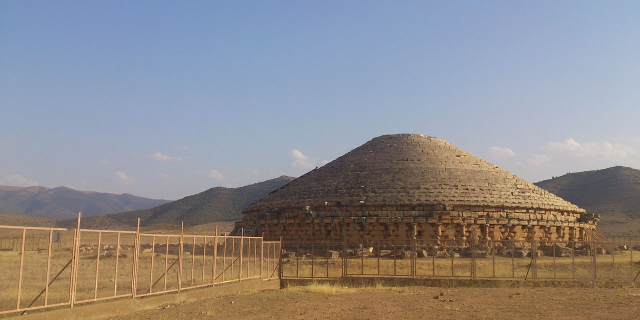



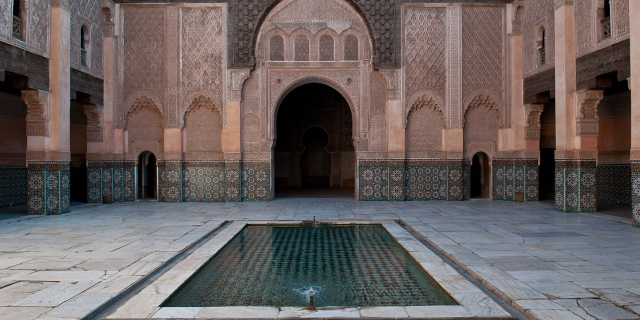




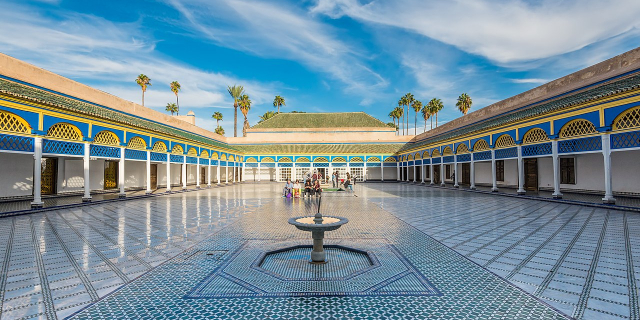





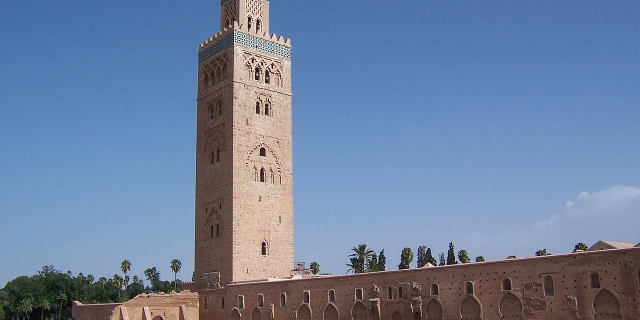

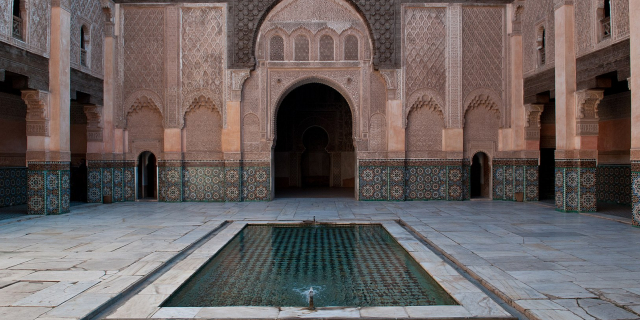
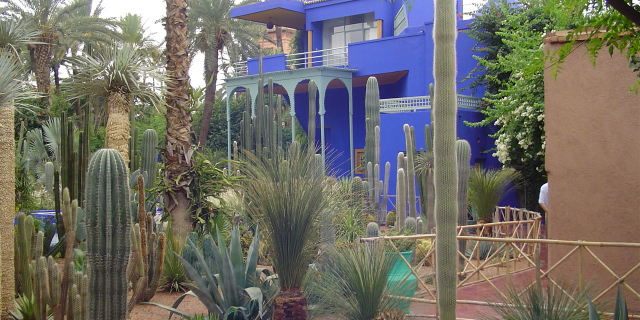


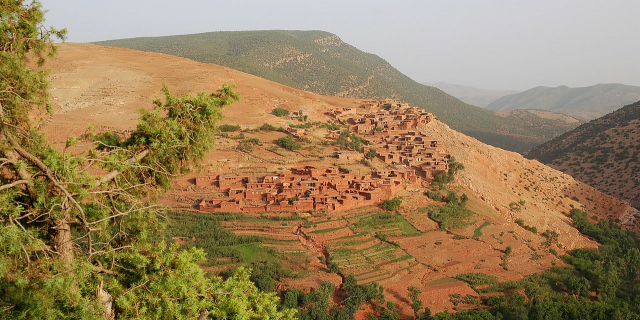





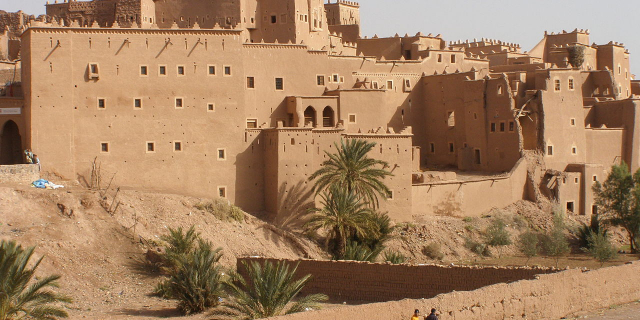

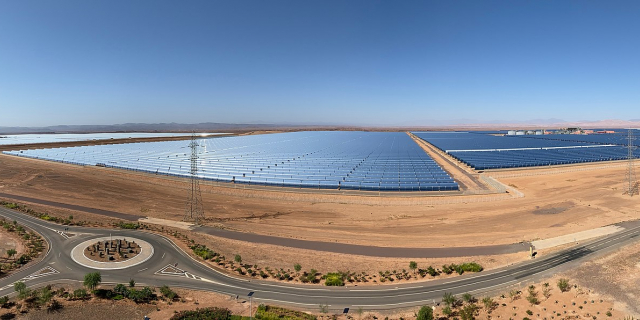

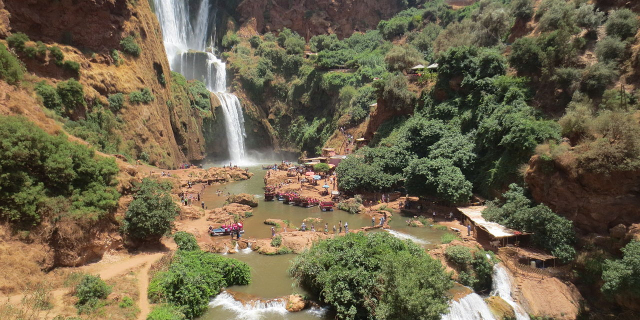

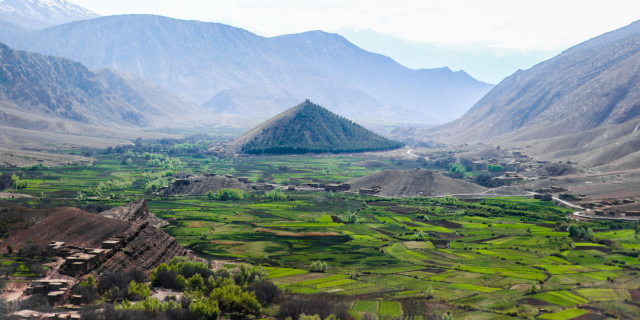

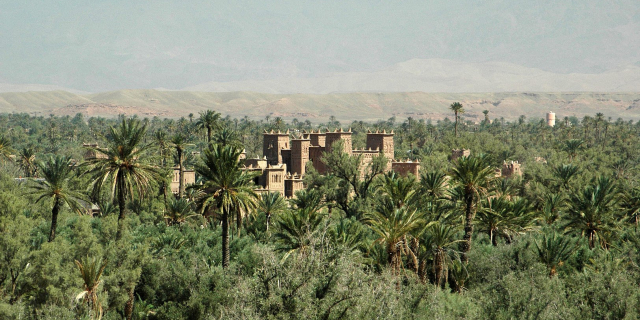
Add new comment